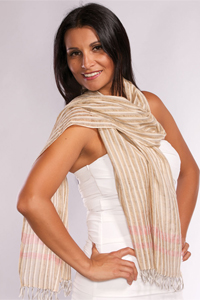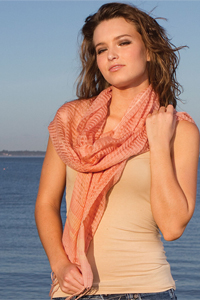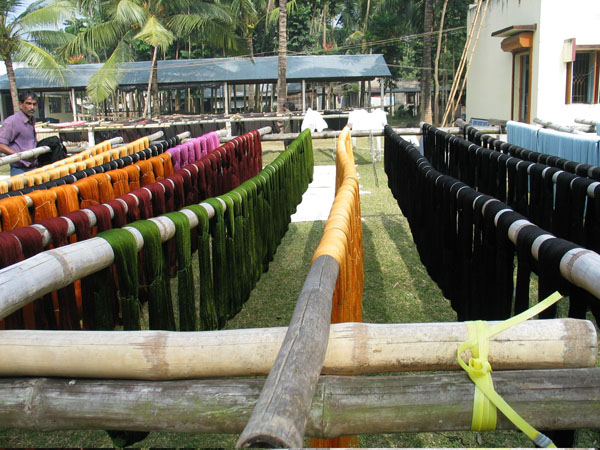Choosing Health Through Natural Dyes and Healthy Fair Trade Clothing
Ayurvedic Dyes and Healing Effects
Ayurvedic herbs have been used in India for centuries. The healing effects of these dyes are long established, both in concrete and emotional terms. When we sweat our body interacts with whatever clothing we are wearing and the dyes in the cloth can literally enter our bodies, and the healing effects of herbal dyes are observable. Our nerves respond better to proper dyes and natural fibers. Moreover, it simply feels so much better wearing clothing that we believe can help us. Investing in fair trade clothing with natural fibers and herbal medicinal dyes makes perfect sense. This is particularly true at the start of a new year.
Herbal cloth is helpful to treat a wide range of imbalances including stress, insomnia, diabetes, and high blood pressure. There are more than 35 shades of dyes that can be made from the ayurvedic herbs. Turmeric root makes yellow/gold color; neem leaves make green color; indigo makes blue color; and sandalwood makes red color. The color choices in herbal cloth are stunning and subtle, alluring and tasteful.
Every step in the process of making Ayurvastra cloth and clothing is precisely monitored and controlled. Ayurvastra, as a branch of ayurveda, begins with 100% organic cotton that has been hand loomed. There is no machine processing, and there are no chemical additives used to prepare the cotton fibers for spinning and weaving, and there are no chemical finishes. In fact, haritaki, an herb used in preparing the fiber, is a rejuvenating aid and is helpful in digestion.
Dyes for Ayurvastra cloth typically contain somewhere between 40 and 60 specifically blended and carefully prepared medicinal herbs, plants, flowers, roots and barks. Maximum health benefit is attained through paying close attention to the temperatures of the dyes, the duration and number of the dye soaks, the blend of herbs, and even the equipment used. In fact, even the waste materials from preparing the dyes are used as natural plant fertilizers.
Here are some examples of herbs used in dying and some of their medicinal uses:
High blood pressure: Wild Basil
Natural sun-screen in clothes: Tea leaves and Poppy Seeds:
Diabetes: mimosa pudica (touch-me-not), cumin seeds, champa flower and hibiscus flowers
Arthritis: curry leaves and dogbane (apocynceae)
Skin diseases: turmeric, neem and sandalwood
Stress & Low Immunity: Indigo
Stay Warm Inside and Out
Staying cozy and warm is an essential building block of health. When the weather is cold and damp our bodies need to work harder to maintain equilibrium if we are not dressed properly. Choosing the best clothing considering the elements requires some careful attention to what you are facing and how you plan to keep warm and dry. Scarves are naturally good choices, since they are extremely flexible for uses around the neck, upper body and, sometimes around the head. These are all critical areas that need to stay dry and warm. Moreover, whenever they are not needed as much for warmth scarves can simply be draped or packed away easily.
Retail and wholesale scarves come in a vast array of choices, but not all choices are ethical-minded. Fair trade scarves ensure that purchase power is directed toward positive aims. These ethically-minded, artisan-made scarves come in a wide variety of natural fibers, weaves and dye choices. Fiber choices play a major role in ensuring your warmth and comfort since certain fibers insulate better, handle wetness better or are simply more comfortable for different purposes. Weaves are also important for these same reasons, and dye choices are important for reasons discussed above. The overall effect needs to be a healthier, cozier, happier person inside and out.




